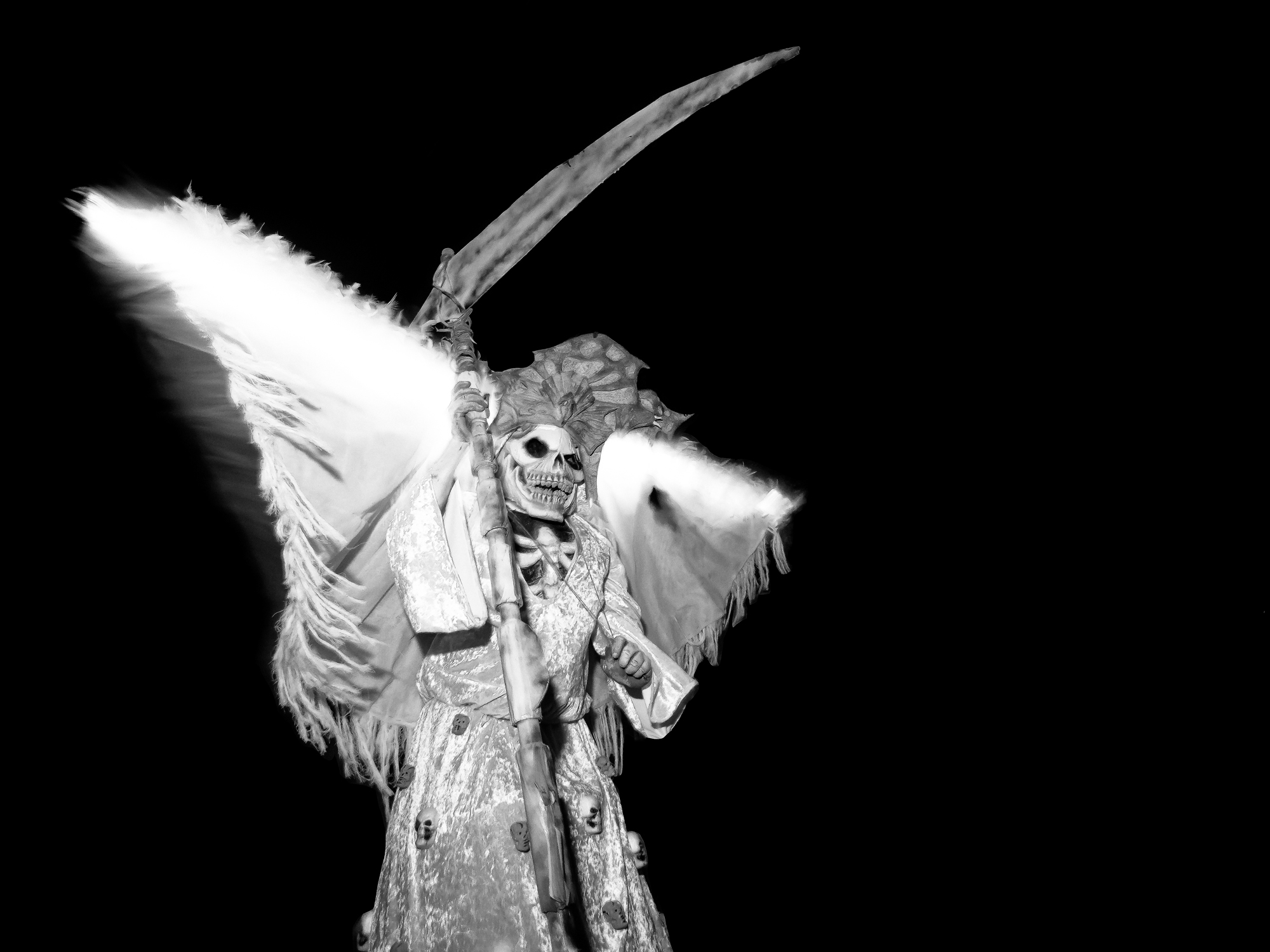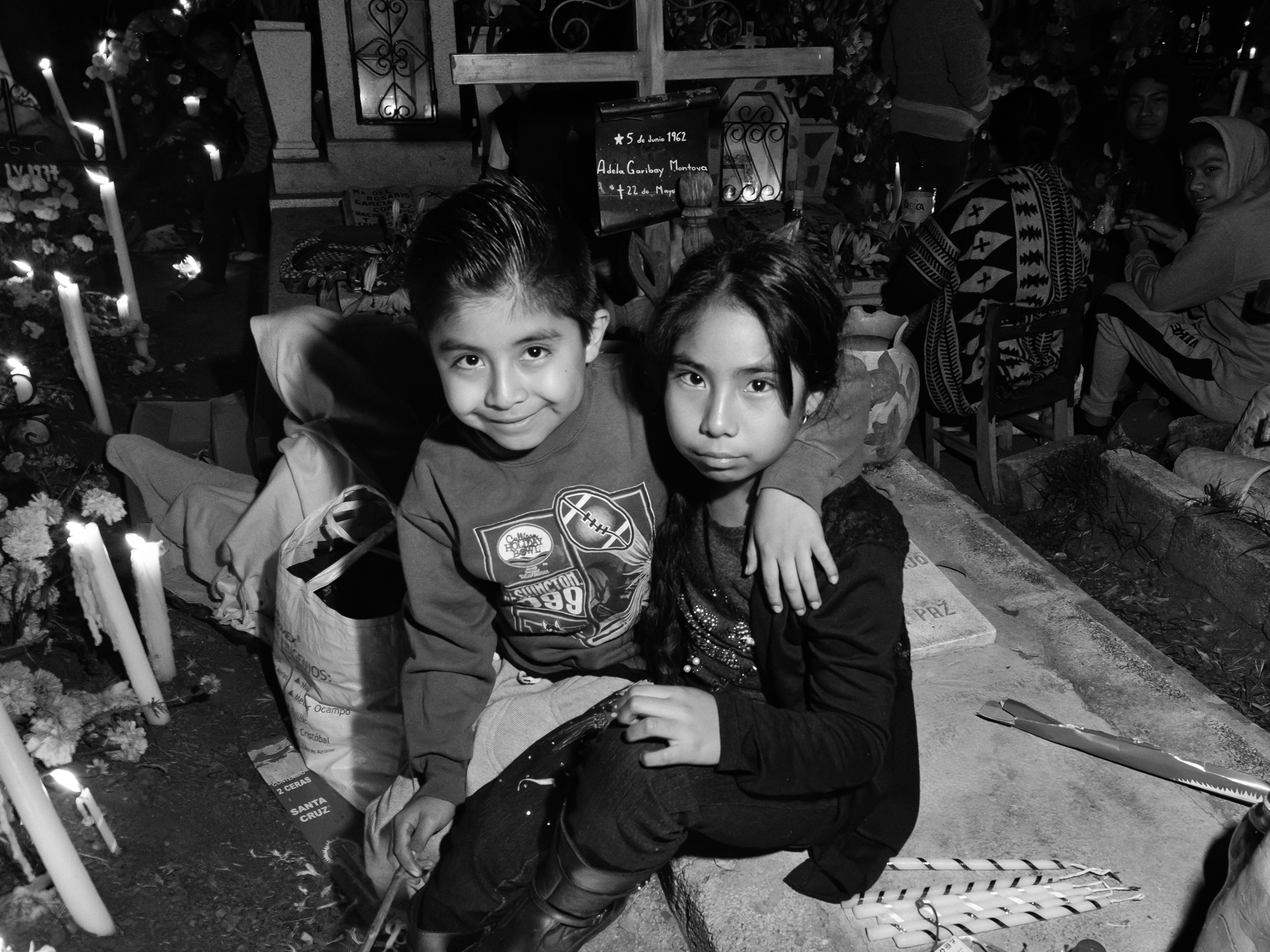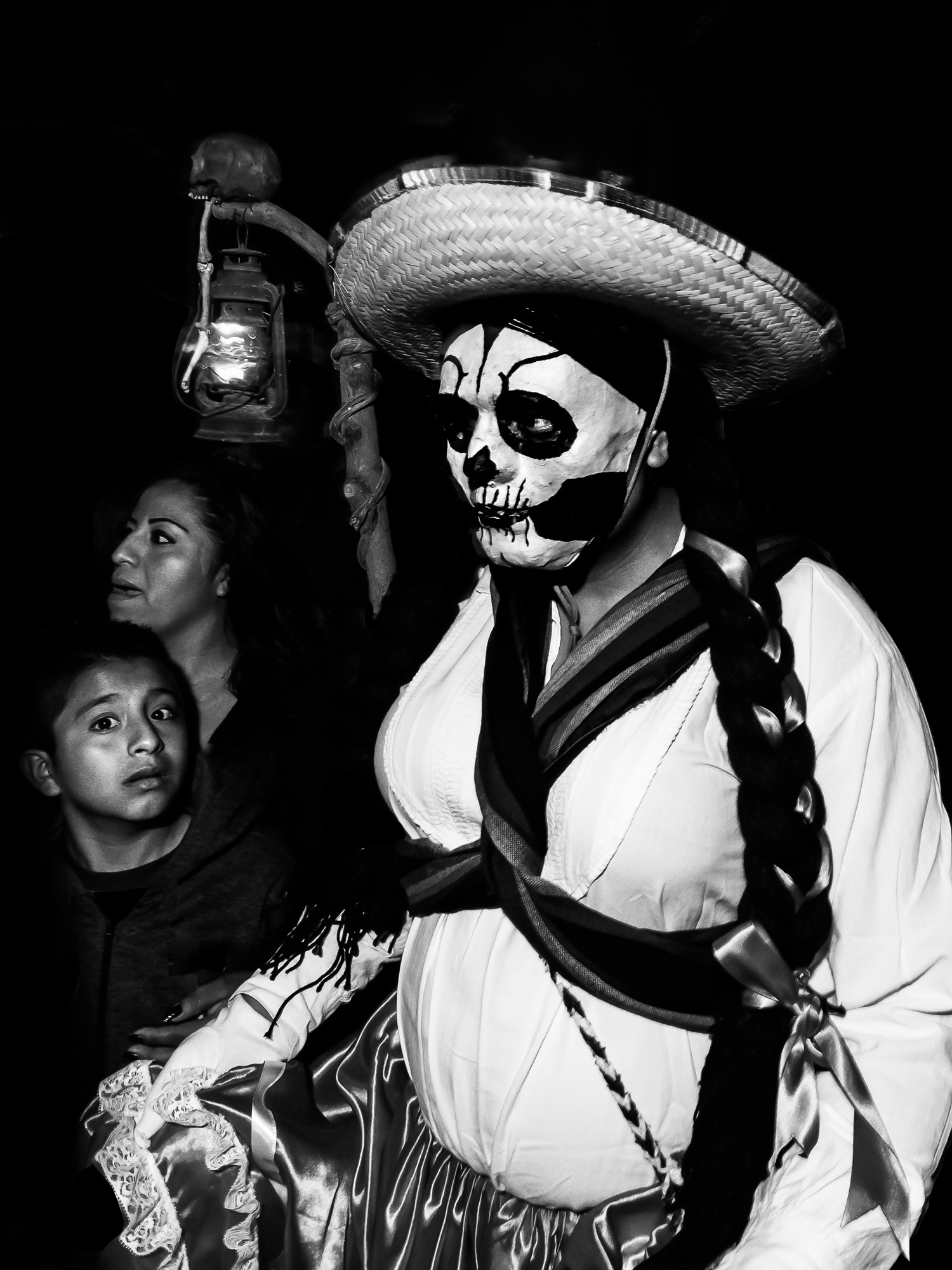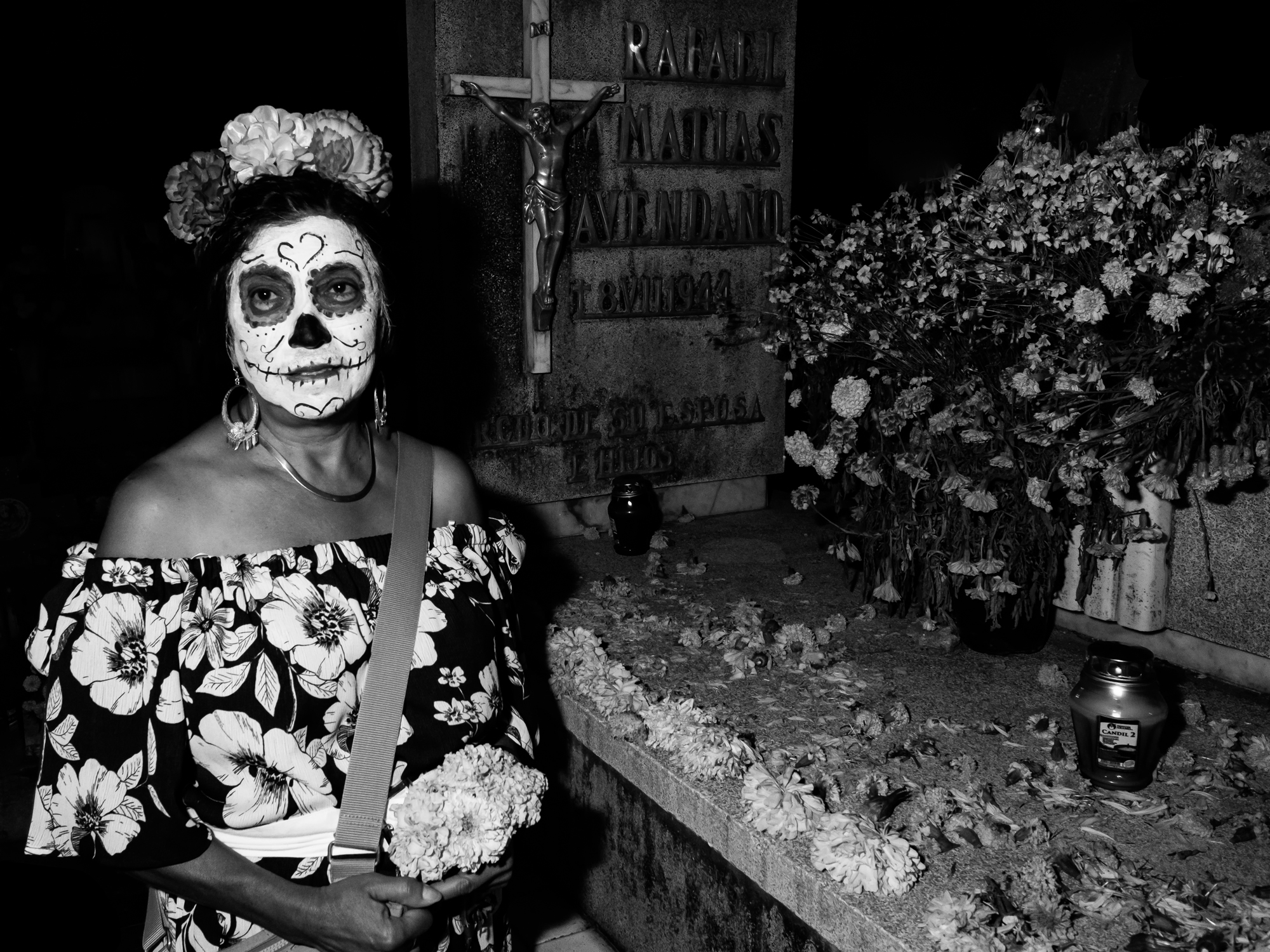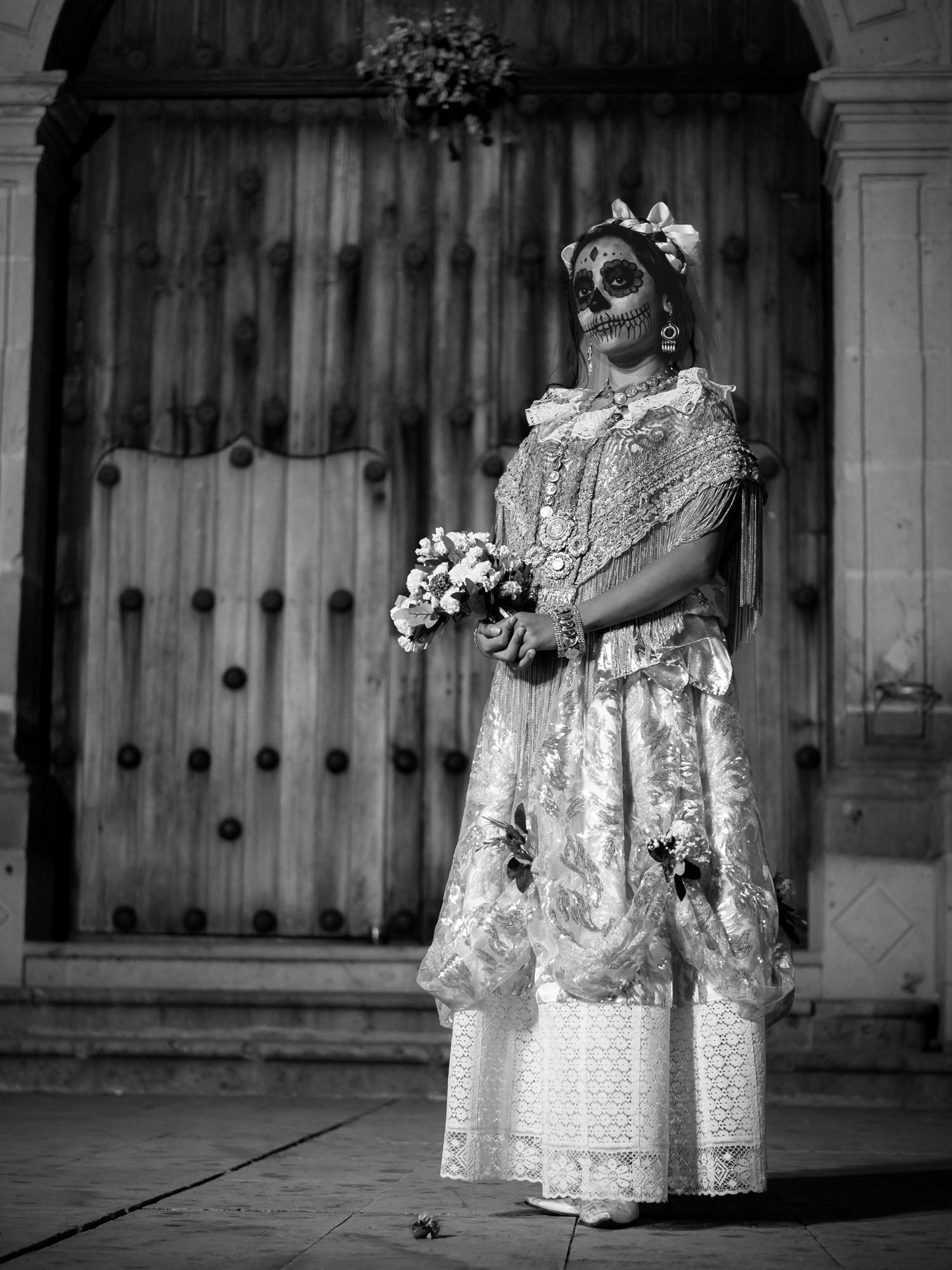Last October, I was fortunate enough, with some guidance from professional photographer David Coleman, to photograph the Day of the Dead celebration in Oaxaca, Mexico. Outside of the big cities, many of the smaller villages have two terrific opportunities for travel and street photographers: parades with incredible costumes, and on a more somber note, cemetery vigils with elaborately decorated tombs and graves — and kind families willing to talk about their departed loved ones.
You’ll find three days of celebrating all things macabre. And you’ll see family members welcoming back their departed relatives and loved ones (luring them with bright flowers, alcohol, food, and fun), enjoying a day with them, and them leading them back to the afterlife for another year. But the most frightening thing? The shooting conditions. Uncontrolled, crowded, and lightning-paced require a combination of courage, practice, and luck. Here are some of the lessons I learned along the way.
A Tight Tilt-a-Whirl. In the heart of the costume parade festivities, there may or may not be a clear path for participants and place for fans and onlookers. In my experience during the Day of the Dead there were zero boundaries. We were in the thick of it — constantly jostled, tilted, whirled around, pressed close to each other and just trying to stay upright. I needed to plant my feet firmly, let the action come to me, and leverage the X-T’s series tilt screens to shoot above my head when needed, away from the eye viewer and with a camera in one hand and a flash in another.
Wide and Close. My most-used lens during the tilt-a-whirl action of the parades was the Fujinon 10-24 f/4 OIS. Stabilization helps, but shooting at 10mm (15mm equivalent) lets you grab a lot even when you are inches away from your subject. By shooting this wide, I got more of the costumed bodies in the shot — and even more importantly — captured onlookers and reactions. These photos that captured the energy or emotion of the crowd were by far my favorites. In cemeteries and less chaotic environments, I switched to the wonderful 16mm 1.4 — my personal favorite.
Get Emotionally Close. I’m not talking about physical distance. This is emotional distance. Laugh with the people next to you. Shout. Join in the fun. Praise the awesome costumes. Show folks the photos on your screen. The cemeteries were full of happy tourists snapping away with phones. Few stop to talk. Despite a small language barrier, you can learn about their families, and they will want to hear about yours. After all, this is the heart, the emotion of the day. No hip shooting. Engage with beautiful people and hear their beautiful stories. (You’ll call your mom after, I guarantee it.)
Zone Focusing Is a Must. There simply is not enough light to focus at the parades or cemeteries. Even the fastest lens/camera combination will not be fast enough to catch those — to quote Henri Cartier-Bresson — “decisive moments.” The festivities are packed and you are literally in the thick of it. You can barely aim, never mind confirm focus, especially when you have a flash in your other hand. Gary Perlmutter has an excellent FujiLove article on zone focusing with lots of technical detail that I won’t repeat here, other than to say to make sure you set focus very close — much closer than anything you’d use in daytime street shooting.
Up Your Flash Game. All of us are familiar with the outstanding high ISO performance of the Fuji system. But we’re talking night here — not low light, but close to zero light. In order to capture these photos flash was a must – and it had to be nimble and flexible. Using a Godox flash and flexible cable, as well as some manual trial and error, I was able to dial in just enough light to properly expose and, in many cases, add to the ambiance with selective lighting that when angled created visual drama that matched the emotional energy. Flash also freezes action, providing one barrier against slow shutter speeds.
Patience. Wait, Don’t Chase. You can’t keep up with the parades when they’re in full force. You either need to find a strategic location (with great bystanders, and few distractions), or loosely anchor yourself in a moving sea of people in the main path of the parade. For those of you who do a lot of street photography, this is second nature. Find a stage and then wait for characters to enter and scenes to emerge. But it is much harder in the chaos of a parade — the energy, the pace, and the urge to click, click, click is almost overwhelming. I had to keep reminding myself I was not documenting everything in the parade, I was trying to capture a few moments that delivered the essence of the emotion and story.
Bring Out the Dead in Post. First, let me emphasize that I do practice some heavy post-processing in certain situations. For these scenarios, shooting in large crowds in the dark with flash creates many distractions from the story of the photo. Streetlights, flash lights, random items just out of zone focus become huge unrecognizable distractions in pitch darkness. In some cases, in Photoshop, I added pure black backgrounds to really zero in on the subject and (when lucky) a story. In other cases, I merely burned down distractions and embraced soft focus since it contributed to the ghostlike ambiance of the scene. Shooting at 10-16mm you’ll get some physical distortion of faces and people that can be corrected nicely in post.


